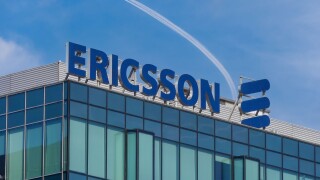Firm
The tie-up between Perkins Coie and Ashurst may generate some striking numbers, but independent IP firms need not worry yet, according to practitioners
Perkins Coie’s US patent prosecution strength could provide Ashurst with an opportunity to enter an untapped market in Australia, but it may not be easy
Mitesh Patel at Reed Smith outlines why the US Copyright Office and courts have so far dismissed AI authorship and how inventors can protect AI-generated works
Xia Zheng, founder of AFD China, discusses balancing legal work with BD, new approaches to complex challenges, and the dangers of ‘over-optimism’
Sponsored
Sponsored
-
Sponsored by Liu, Shen & AssociatesJun Qiu of Liu, Shen & Associates analyses two recent CNIPA decisions that provide insights into the application of the good faith principle in patent re-examination and invalidation procedures in China
-
Sponsored by TOPPAN Digital IPThe team at TOPPAN Digital IP believe there are key flaws in current intellectual property systems and services. Managing IP hears how the company’s STREAM IP platform is aimed at addressing them
-
Sponsored by Liu, Shen & AssociatesDongguo Liang of Liu, Shen & Associates says DeepSeek should take swift action to address ‘insufficient planning’ in its intellectual property protection strategy and an ‘underdeveloped’ patent portfolio
-
Sponsored by Wanhuida Intellectual PropertyYue Guan of Wanhuida Intellectual Property considers the CNIPA’s evidentiary standards after its invalidation of a patent for the crystalline form of lemborexant and explains the implications for pharmaceutical patent strategies in China
-
Sponsored by Maiwald Intellectual PropertyGerman courts are now permitting the service of claims on Chinese respondents by publication to ensure effective legal protection. Marco Stief of Maiwald contrasts this approach with the Unified Patent Court’s stricter stance
-
Sponsored by Gün and PartnersGüldeniz Doğan Alkan and Dilan Sıla Kayalıca of Gün + Partners highlight a Turkish Court of Cassation ruling that shows how a trademark owner’s actions – or inaction – can limit courts’ boundaries in assessing similarity














![1200_17th_images_071812[1] 3.jpg](https://static.legalbenchmarkinggroup.com/dims4/default/46d4318/2147483647/strip/true/crop/3328x1872+0+174/resize/320x180!/quality/90/?url=https%3A%2F%2Fk4-prod-legal.s3.eu-west-1.amazonaws.com%2Fbrightspot%2Fae%2Fda%2F3bb43c034f46989edd34a5c00e5f%2F1200-17th-images-0718121-3.jpg)






